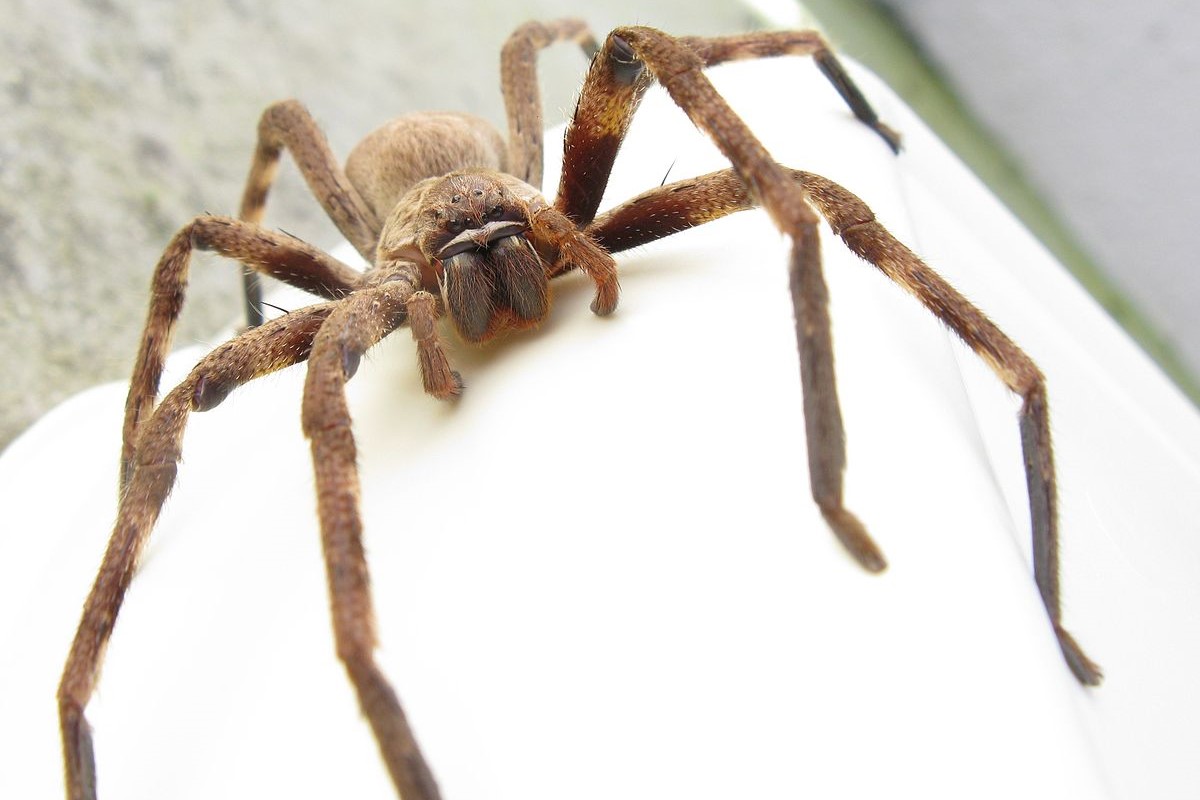
The brown huntsman spider, also known as Heteropoda venatoria, is a fascinating arachnid that can be found in various parts of the world. With a leg span of up to 30 cm, it is one of the largest spiders in existence. Despite its intimidating appearance, the brown huntsman spider is relatively harmless to humans and plays an essential role in controlling the population of insects, including cockroaches and flies.
In this article, we delve into the extraordinary world of the brown huntsman spider and uncover eight astounding facts about this remarkable creature. From its unique hunting techniques to its incredible speed and agility, these facts will not only amaze you but also deepen your understanding and appreciation for these often misunderstood animals. So sit back, relax, and prepare to embark on a journey into the intriguing world of the brown huntsman spider!
Key Takeaways:
- Brown Huntsman Spiders are giant, but mostly harmless to humans. Their unique hunting style and camouflage skills make them fascinating creatures to observe and appreciate in our environment.
- These spiders are nature’s pest controllers, helping to keep insect populations in check. Understanding and respecting their role in the ecosystem can lead to peaceful coexistence with these remarkable arachnids.
The Brown Huntsman Spider is renowned for its large size.
The Brown Huntsman Spider, scientifically known as Heteropoda venatoria, is one of the largest species of spiders in the world. With a leg span reaching up to 25 centimeters (10 inches) in some cases, it can be quite an intimidating sight.
Brown Huntsman Spiders have a unique hunting technique.
Unlike most spiders that build webs to catch their prey, Huntsman Spiders are active hunters. They rely on their exceptional speed and agility to chase down their victims, primarily insects and other small invertebrates.
These spiders are widespread across tropical and subtropical regions.
Brown Huntsman Spiders can be found in various parts of the world, including Asia, Africa, Australia, and parts of the Americas. They thrive in warm climates and are commonly found in urban areas, where they seek shelter in houses, sheds, and garden foliage.
Brown Huntsman Spiders have a remarkable ability to camouflage.
Their brown coloration allows them to blend seamlessly with their surroundings, such as tree trunks or bark. This exceptional camouflage helps them remain hidden from both predators and potential prey.
Despite their large size, Brown Huntsman Spiders are typically harmless to humans.
While their appearance may be intimidating, Brown Huntsman Spiders are generally not aggressive towards humans and prefer to avoid confrontation. Bites from these spiders are rare and usually only occur when they feel threatened or cornered.
Female Brown Huntsman Spiders exhibit unique maternal behavior.
After mating, the female Huntsman Spider typically lays hundreds of eggs inside a silk sac, which she guards and carries with her wherever she goes. She continues to protect and care for the eggs until the spiderlings hatch, providing them with food and protection.
These spiders have an incredible ability to walk on vertical surfaces.
Thanks to their specialized leg structure and strong adhesive pads, Brown Huntsman Spiders can effortlessly climb on smooth vertical surfaces, such as walls or glass. Their agility enables them to explore a wide range of habitats.
Brown Huntsman Spiders play a crucial role in controlling insect populations.
As active hunters of insects, these spiders assist in maintaining ecological balance by keeping the population of pest insects in check. They serve as natural pest control agents and can be beneficial to humans in that regard.
Conclusion
The brown huntsman spider is truly a fascinating creature. With its unique appearance and impressive hunting skills, it has captured the curiosity of many animal enthusiasts. From its massive size to its ability to camouflage, this spider has several astounding traits. Despite its intimidating presence, the brown huntsman spider plays an important role in maintaining the balance of ecosystems by controlling insect populations. So, the next time you come across one of these spiders, remember to appreciate the incredible adaptations that make them such incredible creatures.
FAQs
Q: Are brown huntsman spiders dangerous to humans?
A: Although brown huntsman spiders can bite if provoked, they are generally non-aggressive towards humans. Their venom is not harmful, causing only mild pain, swelling, and redness.
Q: Where do brown huntsman spiders live?
A: Brown huntsman spiders are commonly found in tropical and subtropical regions around the world. They prefer living in warm and humid environments such as forests, gardens, and human dwellings.
Q: How big can brown huntsman spiders get?
A: Brown huntsman spiders can vary in size, but on average, they measure around 1 to 2 inches in body length. However, some species can grow even larger, with leg spans that can reach up to 5 or 6 inches.
Q: What do brown huntsman spiders eat?
A: Brown huntsman spiders are opportunistic hunters and will feed on a variety of small invertebrates including insects, other spiders, and even small lizards or frogs if they can catch them.
Q: How do brown huntsman spiders catch their prey?
A: Brown huntsman spiders do not build webs to catch prey. Instead, they rely on their incredible speed and agility to chase down and capture their victims. They use their long legs and sharp fangs to immobilize their prey before consuming it.
Q: Can I keep a brown huntsman spider as a pet?
A: While some people may choose to keep brown huntsman spiders as pets, they are not recommended for inexperienced keepers. These spiders have specific environmental and dietary needs that can be challenging to meet. It is best to enjoy observing them in their natural habitats.
Q: Do brown huntsman spiders have any natural predators?
A: Yes, brown huntsman spiders do have some natural predators, including birds, reptiles, and larger spider species. However, their incredible speed and ability to hide in crevices and leaf litter help them evade many potential threats.
Q: Can brown huntsman spiders be found in urban areas?
A: Yes, brown huntsman spiders are known to adapt to urban environments and can be found in and around buildings. They can often be spotted on walls, ceilings, or in dark corners, especially during warmer months when they are more active.
Was this page helpful?
Our commitment to delivering trustworthy and engaging content is at the heart of what we do. Each fact on our site is contributed by real users like you, bringing a wealth of diverse insights and information. To ensure the highest standards of accuracy and reliability, our dedicated editors meticulously review each submission. This process guarantees that the facts we share are not only fascinating but also credible. Trust in our commitment to quality and authenticity as you explore and learn with us.


